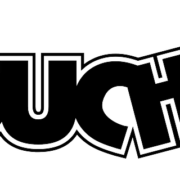Learning Good and Creative Copywriting for humans, or Tell it like it is
I’ve been reading Bury My Heart At Wounded Knee, by Dee Brown, and have been struck by the gloriously evocative way that Native Americans charted the passage of the year. So they had the Moon of the Red Grass Appearing, the Moon of the Deer Dropping Their Horns, the Moon When the Cherries Are Ripe, the Moon When the Deer Paw the Earth, the Moon of the Red Blooming Lilies, the Moon When the Snow Drifts into the Tepees, as well as the easy-to-situate Moon When the Leaves Fall Off and the Moon of the Strong Cold.
Their names were also colourfully (sometimes amusingly) descriptive: Big Mouth, Old Man of the Thunder, Dull Knife, Ten Bears, One-Eye, Kicking Bird, Roman Nose, Sleeping Rabbit and Young-Man-Afraid-of-His-Horses, for example.
Table of Contents
Keep your Copywriting Human
This all appeals to me because the essence of great copywriting is often to ‘tell it like it is.’ Whether you are composing text for a brochure, struggling over the words for a website or putting together case studies, your writing will work better if you avoid unnatural language, jargon and convoluted phrases and instead keep it human.
Here are three ways to ‘tell it like it is’:
1. Speak from the Heart
I’ve been working with the London School of Business & Finance (LSBF) and noticed how Executive Chairman Aaron Etingen neatly sums up the value of an LSBF education in these emotive words:
‘It’s about being competitive, having international exposure, gaining cutting-edge work experience in your field, always learning and developing new skills, always challenging yourself – don’t stay in your comfort zone. It’s about building relationships while you are still a student: your peers are also your future network and will be part of your success in the future.’
In just a couple of sentences youngsters can get a powerful idea of what it might be like to be an LSBF student.

As emotion underlies almost all our buying decisions, a heartfelt ‘pitch’ is more effective than slick sales patter: if you can weave a captivating story showing me just how you’re special, I’m more likely to say ‘Yes’ than if you tell me ten times that you have a great product.
2. Cut out Jargon
Get rid of any jargon and acronyms so everyone can understand. So what if you’re CMB of the BJT, if no one has a clue what you mean? If you’re approved by the CIPD, spell out that that is the Chartered Institute of Personnel and Development then use CIPD afterwards.
Certain professions (the obvious ones that come to mind are IT and lawyers) can make a virtue out of banning jargon, as in this brochure from a Hampshire legal practice:
‘We take the time to explain, we use everyday language to cut through legal jargon and we are ready to support you for the long term. You will find us down to earth, approachable yet highly professional. We are proud to provide London quality at local prices. Couchman Hanson Solicitors enjoy playing a real part in the community and that means we are far more than a 9-to-5 practice: if you want to call us in the evening, that’s fine. Because we never forget our job is all about people.’
3. Use Real-Life Examples
Your website content, brochures, annual reports and case studies will appeal more to your target customers if you use human examples that paint an evocative picture in their mind.
This example comes from a series of search-engine optimised landing pages I wrote for Direct Travel Insurance, and targets travellers over 65.
‘Travel insurance will provide peace of mind that you are covered for lost possessions, medical emergencies and delays or cancellations, wherever your wanderlust takes you. With our over-65 travel insurance policies you get a huge array of benefits at the same price as all our customers. There is no higher premium for senior citizens and the medial expenses and repatriation cover is the same. It means the freedom to head off to that villa in Provence, take a trip to see the Grand Canyon, fly off to the Caribbean or enjoy a gondola ride around Venice. If you have family on the other side of the world, over-65 travel insurance from Direct Travel could be just the ticket.’

So if, just like the Native Americans, you can tell a story and touch the emotions, your copywriting is much more likely to bring results.
If you would like help with copywriting (or the wonderful names of a few more Moons I noted from Bury My Heart), drop me a line on lesley@editingedge.co.uk or give me a call today: 01730 823366.
About the Author

Editing Edge is a bright, effective copywriting and editing service that makes words work for you.
To hook new customers you need website content clearly setting out how they’ll benefit from doing business with you, marketing copy that grabs attention and punchy press releases and e-newsletters.
We’re different, the only copywriters with 20 years’ Fleet Street experience whose first step is to think like your customer so you get your message across. Hire a professional copywriter in London!
Join me on heditingedge.co.uk




When I was a trainee at Campbell-Ewald, our copy chie, Tom Murray, had a term for this. He called it “people talk”. I have used Tom’s term as a guide for my copy over more than 50 years. It still works.
Sounds like you had the best training a copywriter could ask for: every day working under a strict copy chief.
There’s no better training than the rigours of Fleet Street, where deadlines are tight, the boss unforgiving, and by the next day there’s a new paper and it’s too late to make changes!
“People talk” – the language you’d use in the pub; the natural, enthusiastic way you normally speak when you’re excited or proud of something … use that when talking about your product too, and you’ll persuade others.
Tell it like it is: that’s it. Finding what’s real about the product. Sounds like something Bernbach would say